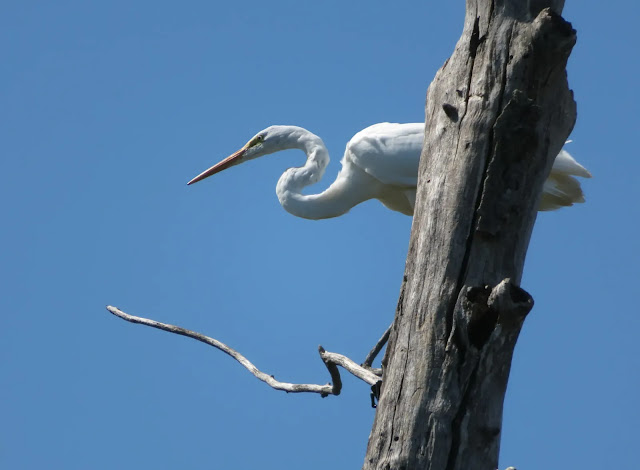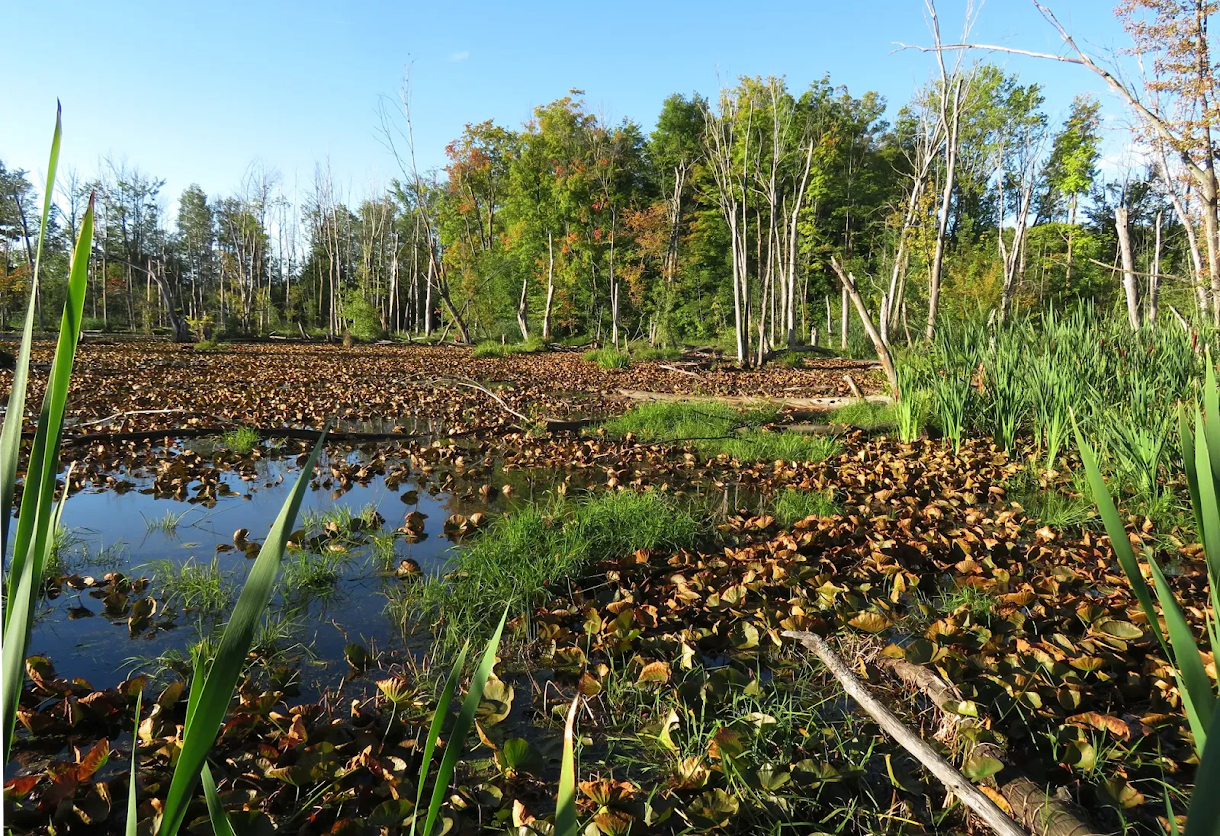Great Egrets

A walk is never complete without a camera. You never know what you might see. And when I am unable to carry my bulkier Nikon then my pocket-sized Canon always comes along. A tiny little PowerShot with a ridiculous 40x zoom that sits over a tiny crop sensor. It obviously cannot compete with my larger camera, but in good light, it can still take a photo. I was walking past the Wetlands, rushing so as not to be late for an appointment when I glanced over, looking past the trees to the edge of the water. I noticed a group of white birds standing out among the lily pads. There were three great egrets (Ardea Alba) and one juvenile great blue heron (Ardea Herodias). There was no time for photos and I hurried on. Thankfully though, on my return walk home the great egrets were still in the area. Two of the great egrets had perched precariously overhead on the dead limbs of trees. I snapped a few shots, hoping that a few would contain some detail and made a mental note to return the next morning...

